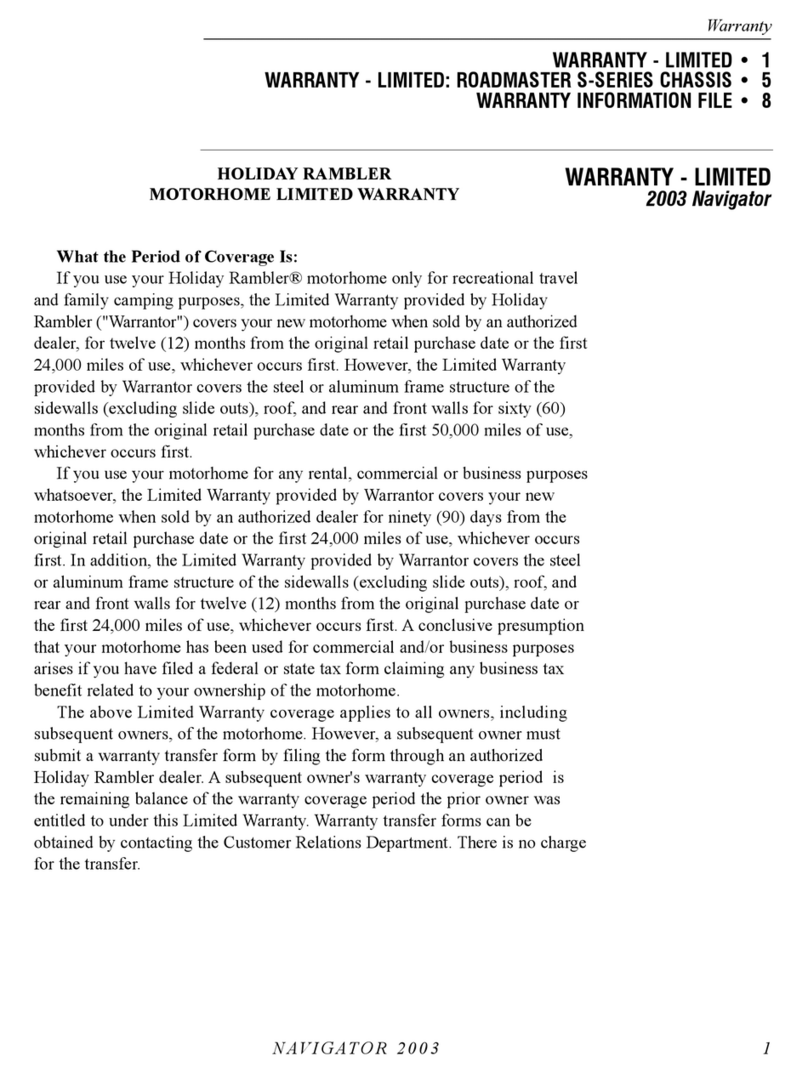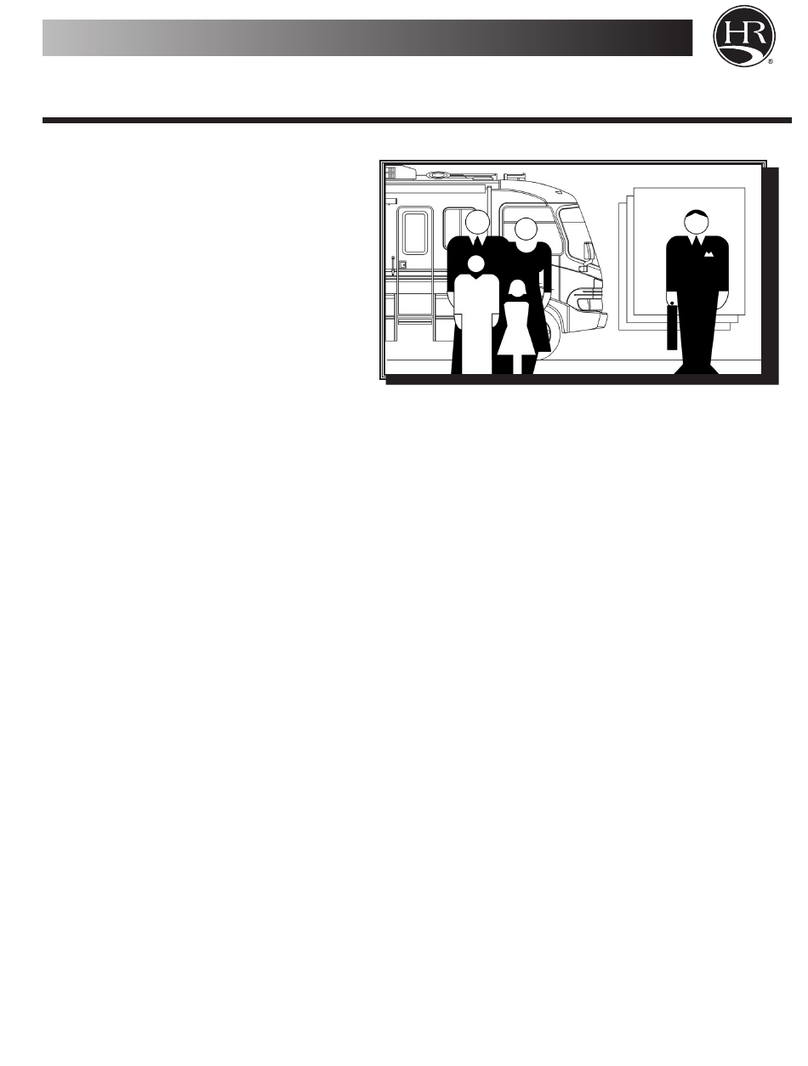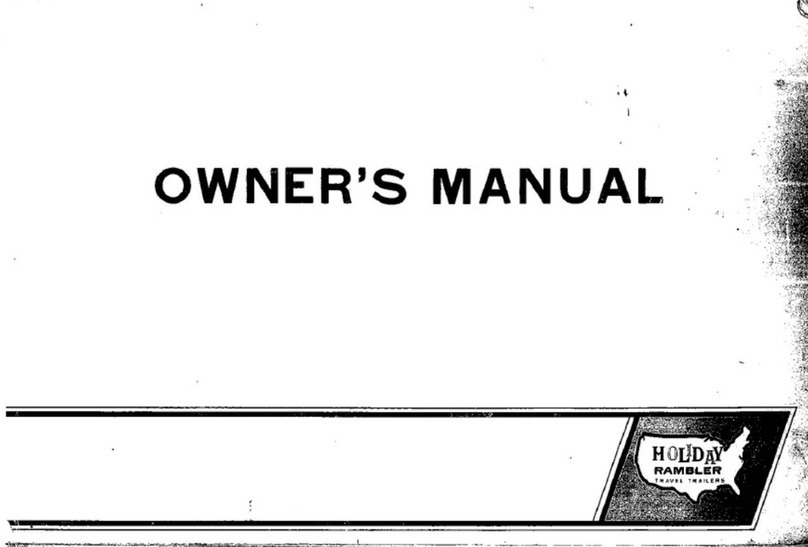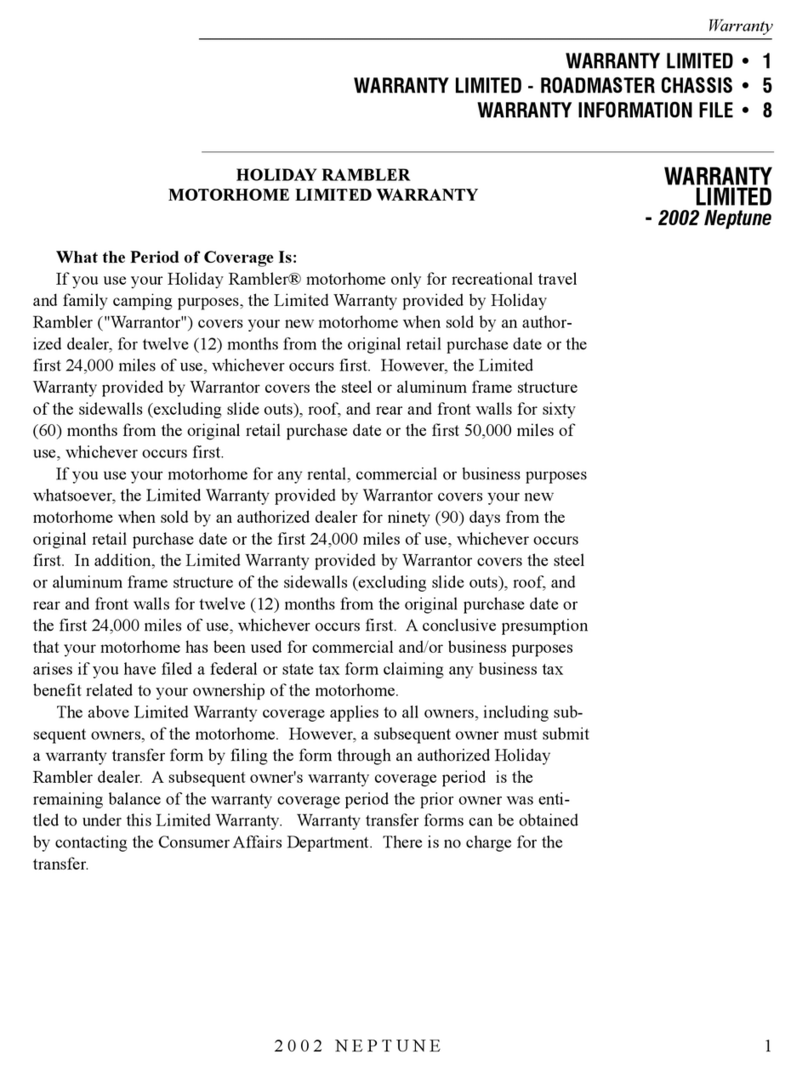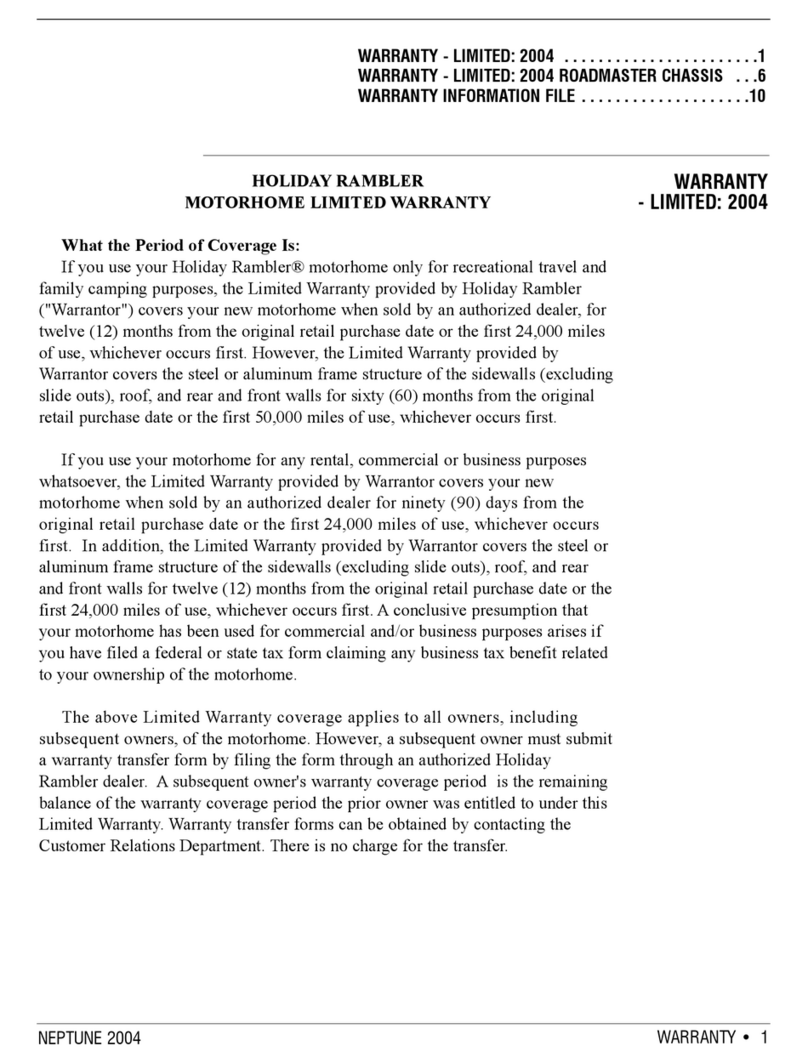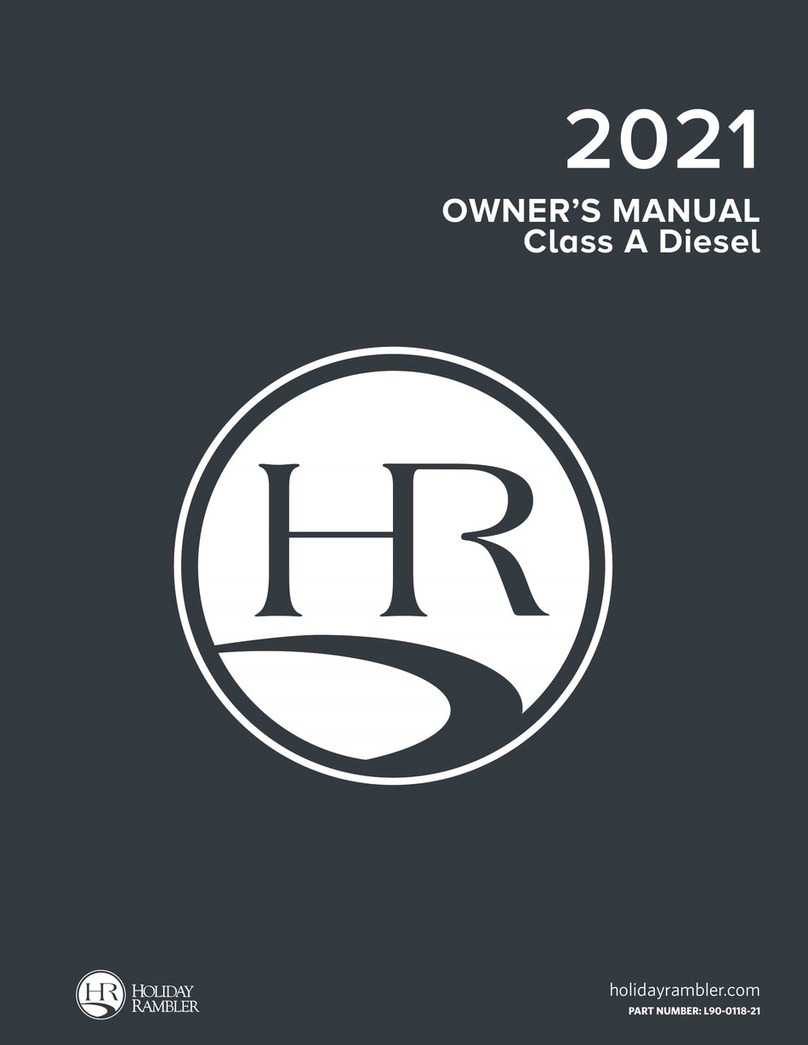
Your suggestions are very important to us and we are continually striving
to improve the quality of our manuals. After becoming familiar with your new
recreational vehicle and the accompanying manual, please take the time to
answer the following questions. When you are nished please return the survey
via mail to our Technical Publications Department, or you may fax the survey
to: (541) 681-8031 Attention: Technical Publications Department. Feel free to
attach an additional page if you desire.
1. Is this your rst recreational vehicle? YES / NO (circle one)
2. If no, what was your previous recreational vehicle brand/model?__________
________________________________________________________________
3. Was the overall appearance and lay-out of this manual what you expected to
see in your new recreational vehicle?
________________________________________________________________
________________________________________________________________
________________________________________________________________________________________________
________________________________________________________________________________________________
4. Was the information within this manual helpful in acquainting you with your
new recreational vehicle? If not please address any area(s) we need to expand
or improve on.
________________________________________________________________
________________________________________________________________
________________________________________________________________________________________________
________________________________________________________________________________________________
5. Were the operating instructions clearly written, and were you able to
follow the steps without any difculty?
________________________________________________________________
________________________________________________________________
________________________________________________________________________________________________
________________________________________________________________________________________________
6. Is there any additional information you would like to see incorporated within
the owner’s manual?
________________________________________________________________
________________________________________________________________
________________________________________________________________________________________________
________________________________________________________________________________________________
NAME: ___________________________ PHONE: (_____)_____________
ADDRESS:______________________________________________________
________________________________________________________________
SERIAL # _______________________________________________________
Cut Along
the Dotted
Line to Mail
Owner’s Manual Survey
2006 Savoy SL & LX 5th Wheel & Travel Trailer

